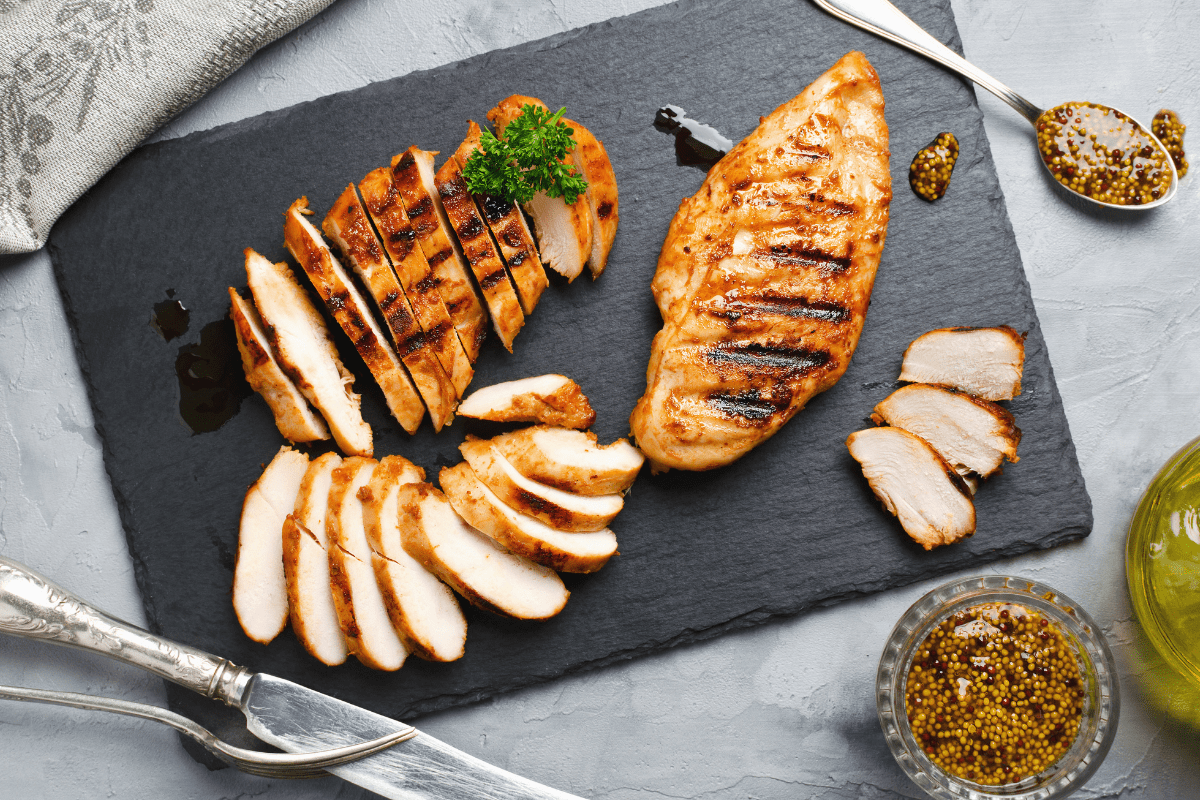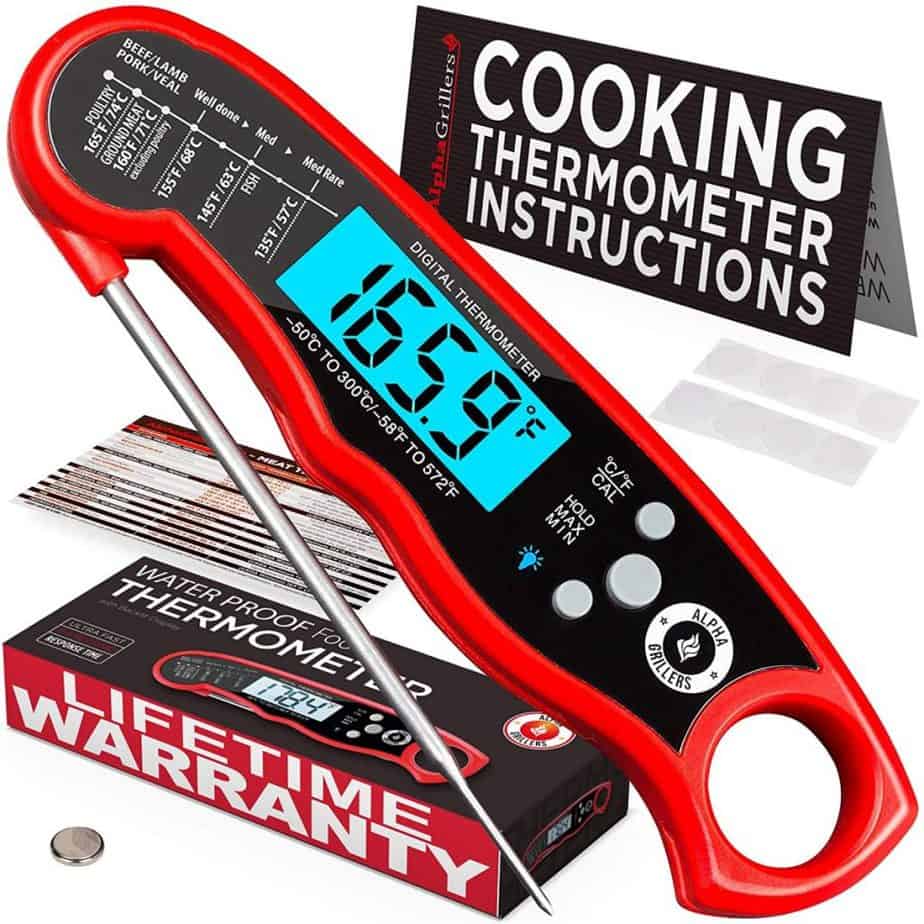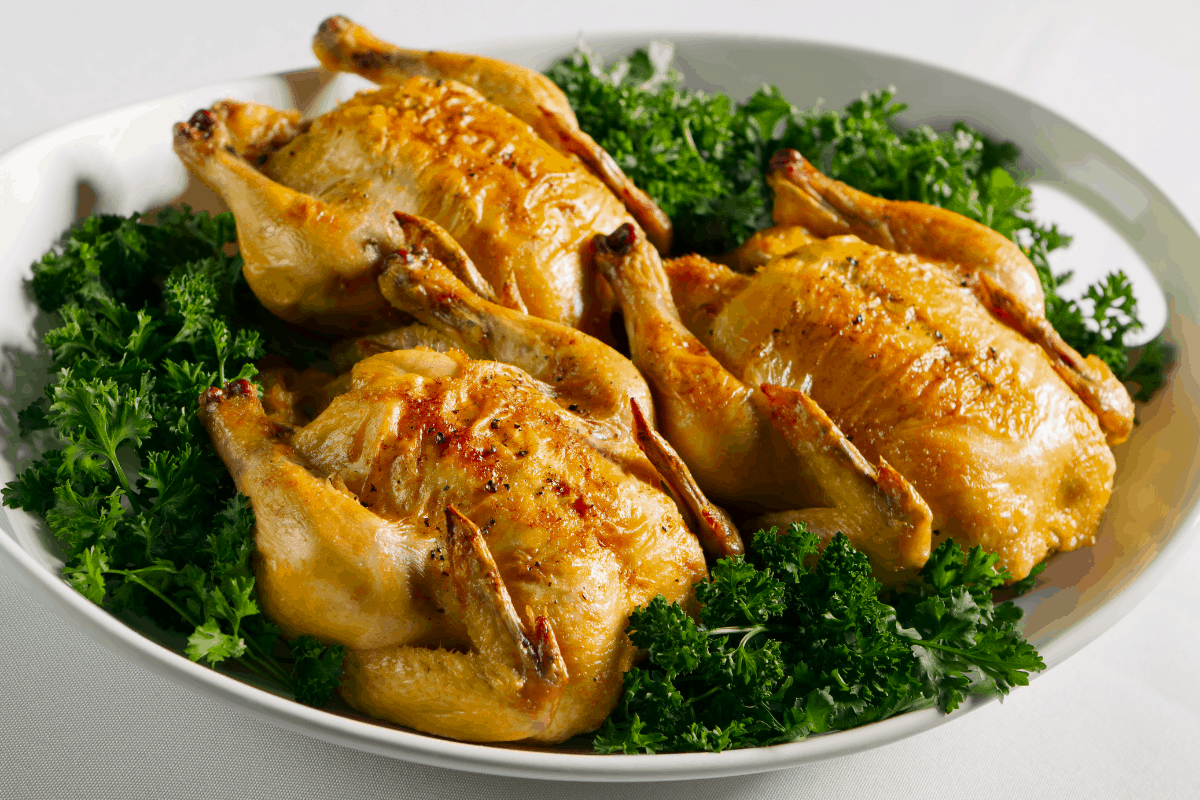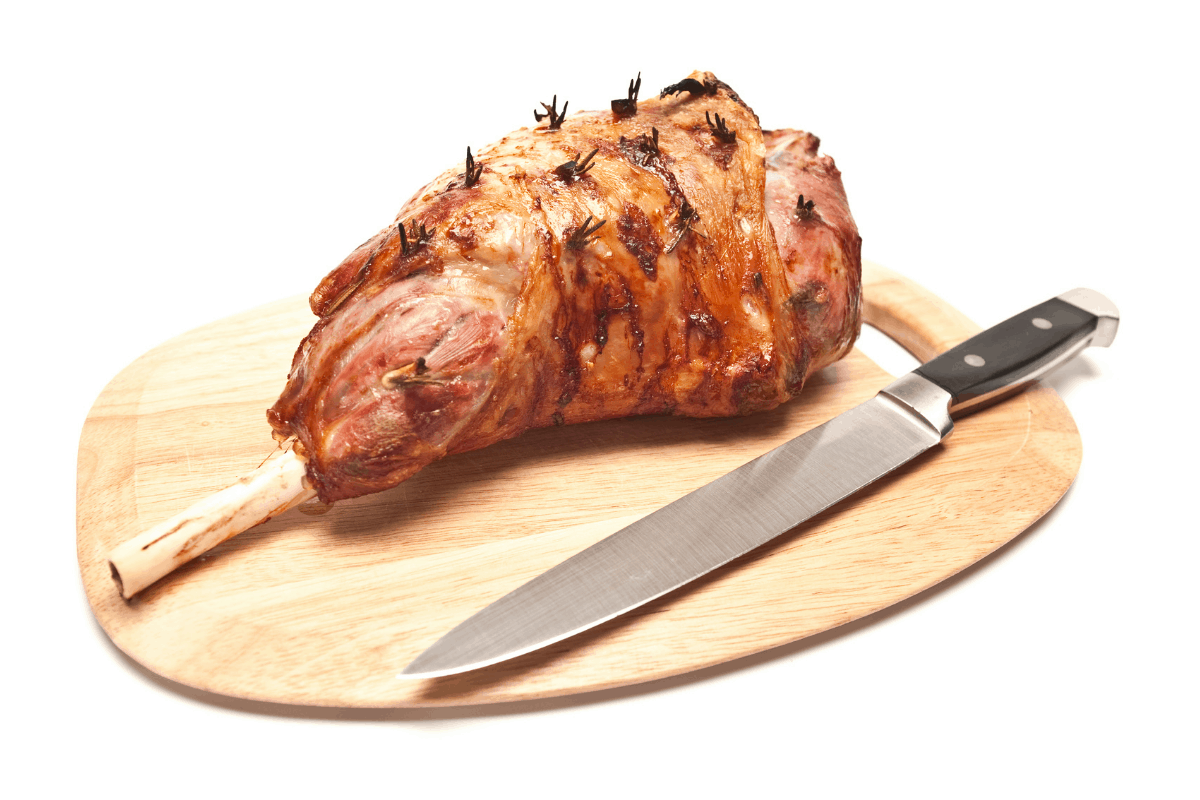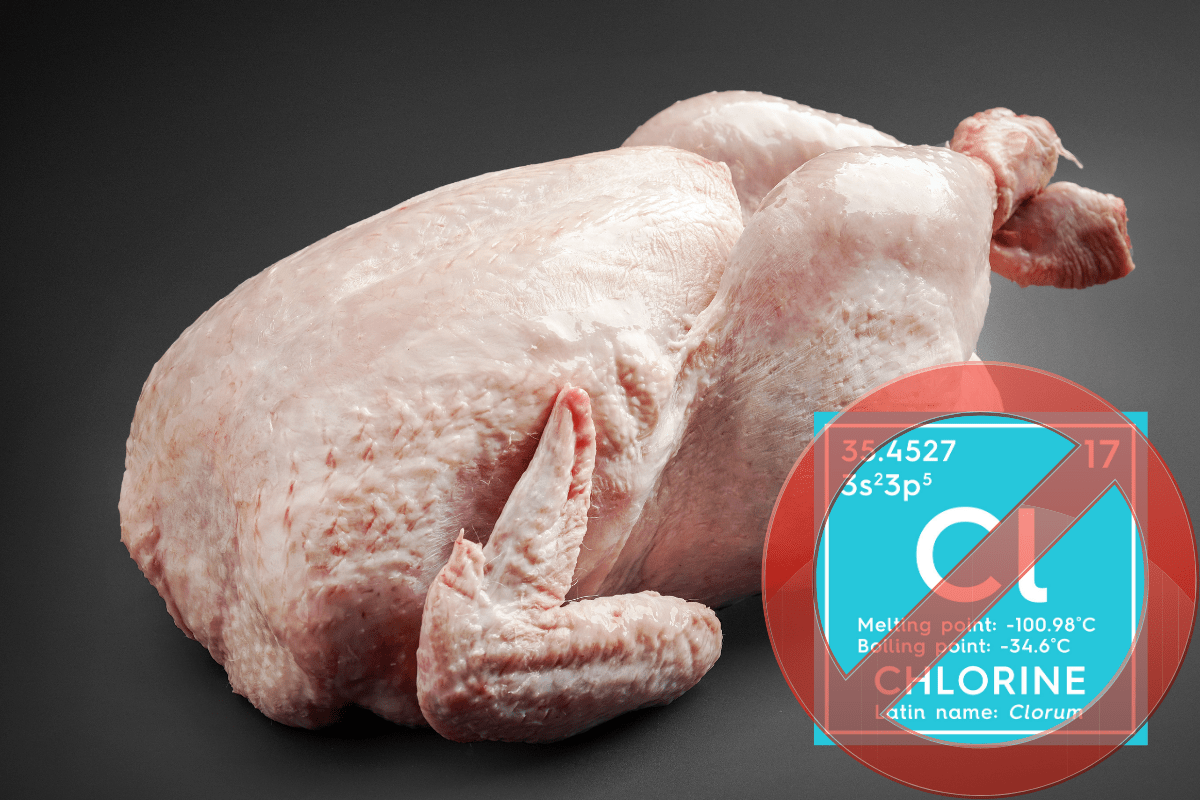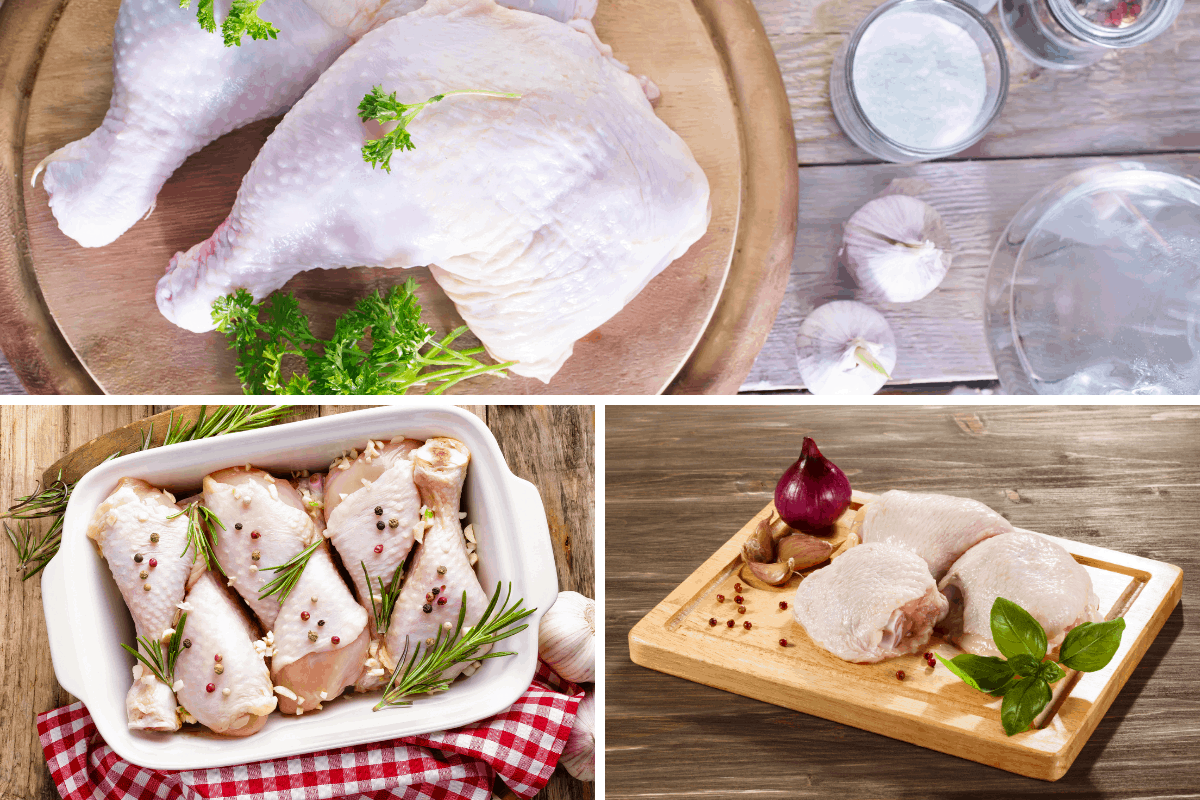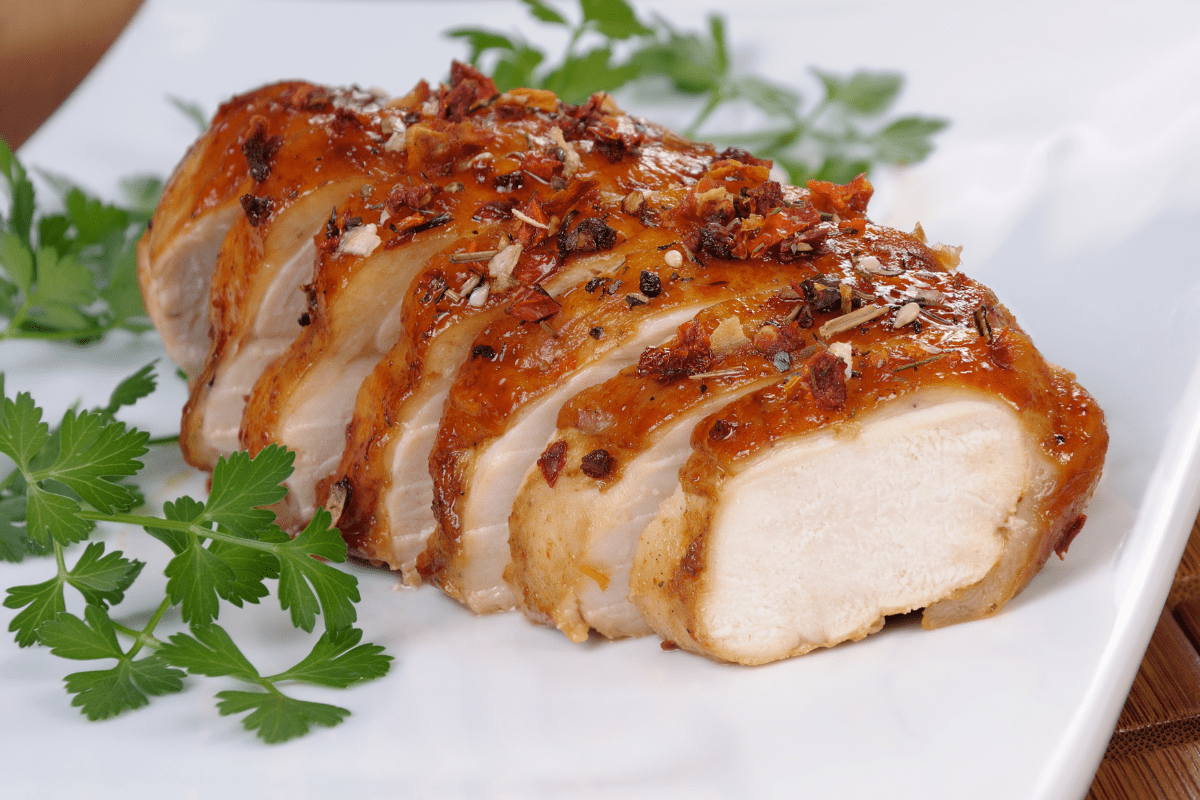There is nothing worse than preparing cooked chicken for a meal, starting to carve, and seeing that it is still pink! Suddenly you are left wondering whether you are about to poison all your guests or family!
Well don’t PANIC!!! Here we will explain when it is, and isn’t. safe to eat pink chicken.
So how do you know if pink chicken is safe to eat? Cooked chicken that looks pink when you cut into it, does not necessarily mean that it is undercooked, or unsafe to eat. Although many people rely on clear juices to determine doneness, the only positive way is doing a temperature check. When probed in the thickest parts of the meat, it has to read over 165oF / 75oC to be cooked enough to kill harmful bacteria, and be considered safe to eat.
We will now look further into why your cooked chicken may still look pink, though it is fully cooked and safe to eat.
This article may contain affiliate links to recommended products that we feel could be useful to you. Any qualifying purchases may result in us receiving a small commission at no extra expense to you!
What Makes Cooked Chicken Look Pink?
There are several things that can affect the final color of your your cooked chicken and make it seem as though it is undercooked. Once you know to look out for these signs, it will help ease the anxiety when you next cut into your chicken breast and see that slight rosy hue to the meat.
The pinkness can be caused by:
- Myoglobin Bone Pigment
- Freezing the meat
- Smoking
- Undercooked
Bone Marrow Pigment
The chickens found on sale in most butchers and grocery stores are less than 8 weeks old.
These young chickens have thin hollow bones that contain ‘myoglobin‘. This is a protein that helps to store oxygen in the blood and can leak into the muscle of the meat as it cooks. This will cause the meat surrounding the bones to take on a darker pinker color, but has nothing to do with the ‘doneness’ of the meat.
Frozen Chicken
When chicken is frozen, once again the protein can leak out of the bones and into the flesh. Once cooked, this protein can turn a brown color around the bones and can sometimes give the illusion that the meat is not fully cooked.
Smoked Chicken
Chicken that has been smoked can cause the meat to have a pink coloring that is caused during the smoking process.
Depending on how the smoke flavor has been added to the chicken, the pinkness can either be seen just below the surface, almost like a ring of pink, or throughout the flesh of the meat.
If the meat has been injected with a liquid smoke to give the flavor, then you may see a pink tinge within the flesh, whereas chicken exposed to actual smoke, will see the pink around the exterior of the meat.
No matter how much you cook the smoked chicken, the dark pink color will remain as it has retained this color from the smoking process.
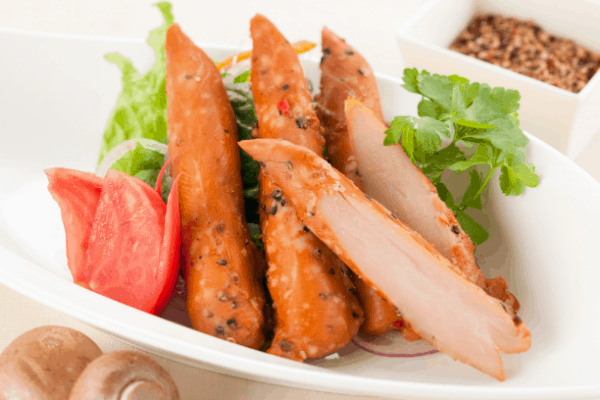
Undercooked
Obviously, there will be times when the meat is still pink due to the fact that it is not yet fully cooked. DO NOT eat the meat in this instance, but return to the heat source to continue cooking!
The only way to ensure that the meat is NOT undercooked, is using a digital food temperature thermometer. These probes are reasonably priced (usually under $20), and can help prevent you not only undercooking your meat, but overcooking it too.
This food probe is highly rated on Amazon!
Eating undercooked chicken can cause food poisoning that will be very unpleasant, and can even be fatal.
By using a food temperature probe, you can be sure that your meat has reached the temperature required to kill off any harmful bacteria that may cause you to become sick.
For chicken and other poultry, the USDA recommends that the internal temperature in the thickest part of the chicken should reach at least 165oF/75oC to be safe to eat.
If you have probed the chicken and it has reached this temperature or higher, you can be confident that it is now fully cooked, even if there is still a hint of pink showing in the meat.
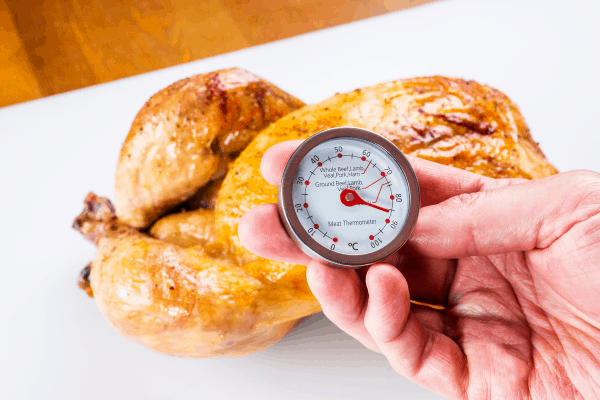
Still Worried?
We have been conditioned over the years to believe that ‘pink’ chicken is not cooked and will make us sick. As we have mentioned, if the pink is down to under cooking, then that is true.
Even when fully cooked, it may still be a little off putting to you, or your guests to see that pink blush in the meat you are serving. It somehow seems wrong to be able to eat it, even though you know that it is up to temperature and won’t harm you.
If you can’t bring yourself to serve ‘pink chicken’, then there are a couple of things you can do to combat those fears.
Cook Boneless Chicken
As we have mentioned earlier in the article, much of the pink coloring comes from around the bones of the meat.
If you cook your meat without the bones, then this cannot occur. Either buy boneless chicken portions, or ask your butcher to bone the meat out for you.
Briefly Place Back Under Heat
Once you have carved the meat, if you are noticing a slight pink element to the slices, place the cut slices back into the oven for a very brief moment. This will take away the pink look, and leave you with the cooked color you are wanting. Just be sure to only keep it in the heat long enough to remove the pink otherwise you will quickly end up drying out the meat slices, and losing the succulent juices.
If you can train yourself to trust the science instead of what you have been led to believe over the years, then cooking chicken to 165oF/75oC will allow you to enjoy moist succulent chicken every time, even if it does look a little pink.
Believe me, once you can accept that the meat is cooked, you will never have to suffer with dry tasteless meat again, and can forget the anxiety of seeing that slight pink blush to your meat.
This is true of all meats that you cook. The temperature probe will allow you to cook any meat to the perfect temperature to ensure great results every time.
Treat yourself to a food thermometer and start enjoying truly delicious ‘cooked’ but not ‘overcooked’ chicken!
